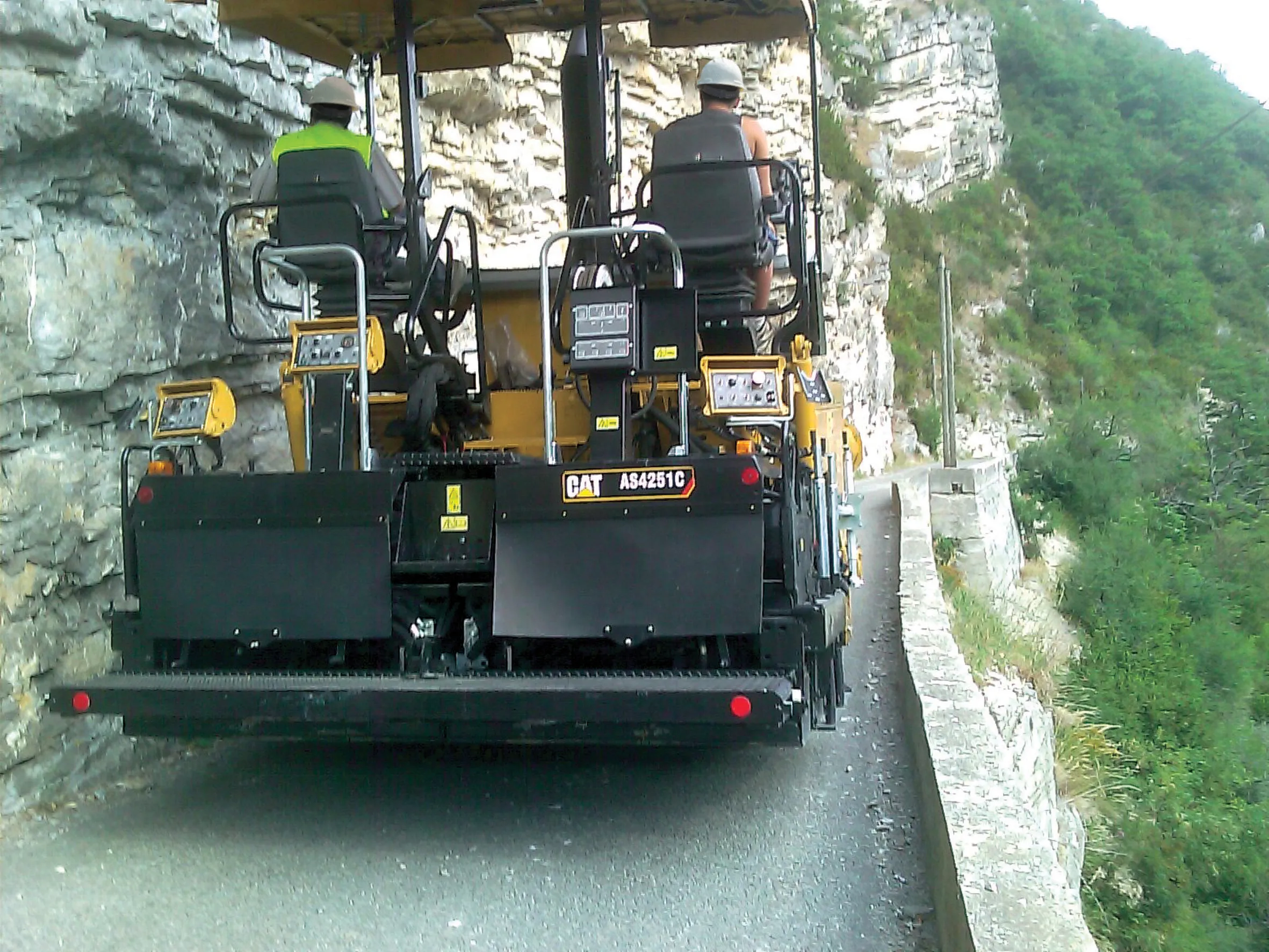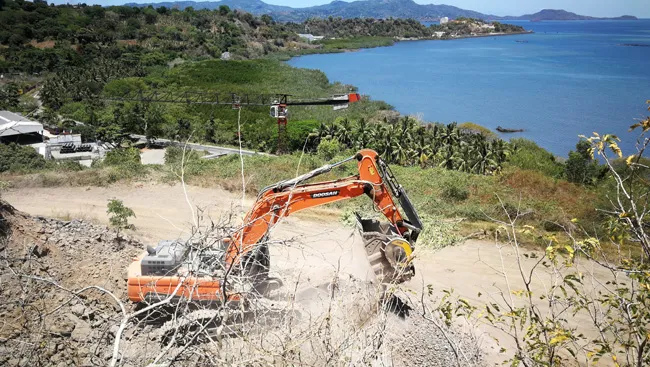Roads in south-eastern France and those on the west coast of Spain share a common challenge often faced by road construction crews around Europe: extremely tight working conditions. According to Caterpillar, such conditions create construction demands that can affect traffic flow, the preservation of historic structures and even the ability to resurface these narrow roads that, in some cases, have been around for centuries. Add to these challenging working conditions, the mountainous terrain found in the Al
February 14, 2012
Read time: 4 mins

Roads in south-eastern France and those on the west coast of Spain share a common challenge often faced by road construction crews around Europe: extremely tight working conditions.
According to178 Caterpillar, such conditions create construction demands that can affect traffic flow, the preservation of historic structures and even the ability to resurface these narrow roads that, in some cases, have been around for centuries. Add to these challenging working conditions, the mountainous terrain found in the Alpine regions of south-eastern France (including hairpin curves and switchbacks) and contractors are often required to deal with a whole host of logistical concerns that go beyond simple mat smoothness and densities.
However, the company's AP655D track-type paver with model AS4251C screed has been handling such paving challenges on narrow jobsite situations.
"The 19,165kg AP655D excels in a wide range of applications with the help of two innovative track solutions: the Mobil-trac (MTS rubber track) and steel track undercarriages. Each track option is fully bogied with an automatic hydraulic track tensioning system," says Caterpillar.
"Crews across Europe, Africa and the Middle East are finding this is one paver solution that handles a demanding highway reconstruction job or a commercial-sized parking area project as adeptly as it handles the tightest Alpine switchback." Its features, standard 2.55m paving width (up to 5m with hydraulic extensions or to 8m with mechanical extensions, productivity, short turning radius, and excellent manoeuvrability, are coupled with proven technologies. This allows crews to focus more on jobsite challenges, than machine operation."
In the Rhône-Alpes region of south-eastern France, a new Cat AP655D MTS was recently paving its way along a narrow thoroughfare, as crews worked carefully along a winding mountain road.
French contractor Braja was demonstrating an AP655D along a 7.1km stretch of roadway between Villepredrix and Léoux where the elevation changed from 450m to 750m. In this first application, it took crews about 45 minutes to lay 250tonnes of a bituminous concrete mixture.
Next day the paver back at work along a similar path, this time paving 8km of roadway in a machine demo from Verclause to Lemps, along an altitude rise of some 200-plus metres, under a similar timeframe.
"Despite the inherent jobsite challenges of any mountainous terrain, Braja crews say the AP655D handled the distances about three times more quickly than steel chain paver finishers they have used in Local Cat dealer2154 Bergerat Monnoyeur's paving product specialist Pierre Boully points out that because of the sharp mountainous turns and tight turning radius required for this project, it was impossible to transfer the paver to the jobsite on a lorry.
Braja selected the undercarriage option of its new AP655D wisely.
Boully explains that despite the rigorous climb, "the AP655D was easily able to ascend the mountain road on its own thanks to its high travel speeds and Mobil-trac System. It easily covered the required distance of 5km, in one hour." Over 1,500km away, Oviga, a Spanish road construction contractor and customer of local Cat dealer, Finanzauto, found the Cat AP655D steel track paver to be "a perfect fit" for another challenging road construction project in western Spain. In its inaugural application, the paver was tasked to pave a worn out stretch of village road near Palas de Rei, about 70km east of Santiago de Compostela.
Typically, when customers take delivery of a new paver, operators and crews dedicate some time to commissioning (start-up training that thoroughly reviews proper controls and machine functions). In this case, Oviga was anxious to start the project and get the AP655D into the field, so opted for "on-the-job" training.
With the AP655D's intuitive operations, and the help of Cat commissioning engineer Davide Dalla and dealer Finanzauto, Oviga crews quickly became proficient in the paver's operation. With no prior experience with the paver, they completed the project to specification and on time.
The paver's Cat C6.6 turbocharged six-cylinder diesel engine delivers 129 kw and features proven ACERT technology that incorporates a series of innovations working at the point of combustion to optimise engine performance. It meets European Stage IIIA engine emissions regulations for off-road applications.
According to
However, the company's AP655D track-type paver with model AS4251C screed has been handling such paving challenges on narrow jobsite situations.
"The 19,165kg AP655D excels in a wide range of applications with the help of two innovative track solutions: the Mobil-trac (MTS rubber track) and steel track undercarriages. Each track option is fully bogied with an automatic hydraulic track tensioning system," says Caterpillar.
"Crews across Europe, Africa and the Middle East are finding this is one paver solution that handles a demanding highway reconstruction job or a commercial-sized parking area project as adeptly as it handles the tightest Alpine switchback." Its features, standard 2.55m paving width (up to 5m with hydraulic extensions or to 8m with mechanical extensions, productivity, short turning radius, and excellent manoeuvrability, are coupled with proven technologies. This allows crews to focus more on jobsite challenges, than machine operation."
In the Rhône-Alpes region of south-eastern France, a new Cat AP655D MTS was recently paving its way along a narrow thoroughfare, as crews worked carefully along a winding mountain road.
French contractor Braja was demonstrating an AP655D along a 7.1km stretch of roadway between Villepredrix and Léoux where the elevation changed from 450m to 750m. In this first application, it took crews about 45 minutes to lay 250tonnes of a bituminous concrete mixture.
Next day the paver back at work along a similar path, this time paving 8km of roadway in a machine demo from Verclause to Lemps, along an altitude rise of some 200-plus metres, under a similar timeframe.
"Despite the inherent jobsite challenges of any mountainous terrain, Braja crews say the AP655D handled the distances about three times more quickly than steel chain paver finishers they have used in Local Cat dealer
Braja selected the undercarriage option of its new AP655D wisely.
Boully explains that despite the rigorous climb, "the AP655D was easily able to ascend the mountain road on its own thanks to its high travel speeds and Mobil-trac System. It easily covered the required distance of 5km, in one hour." Over 1,500km away, Oviga, a Spanish road construction contractor and customer of local Cat dealer, Finanzauto, found the Cat AP655D steel track paver to be "a perfect fit" for another challenging road construction project in western Spain. In its inaugural application, the paver was tasked to pave a worn out stretch of village road near Palas de Rei, about 70km east of Santiago de Compostela.
Typically, when customers take delivery of a new paver, operators and crews dedicate some time to commissioning (start-up training that thoroughly reviews proper controls and machine functions). In this case, Oviga was anxious to start the project and get the AP655D into the field, so opted for "on-the-job" training.
With the AP655D's intuitive operations, and the help of Cat commissioning engineer Davide Dalla and dealer Finanzauto, Oviga crews quickly became proficient in the paver's operation. With no prior experience with the paver, they completed the project to specification and on time.
The paver's Cat C6.6 turbocharged six-cylinder diesel engine delivers 129 kw and features proven ACERT technology that incorporates a series of innovations working at the point of combustion to optimise engine performance. It meets European Stage IIIA engine emissions regulations for off-road applications.








